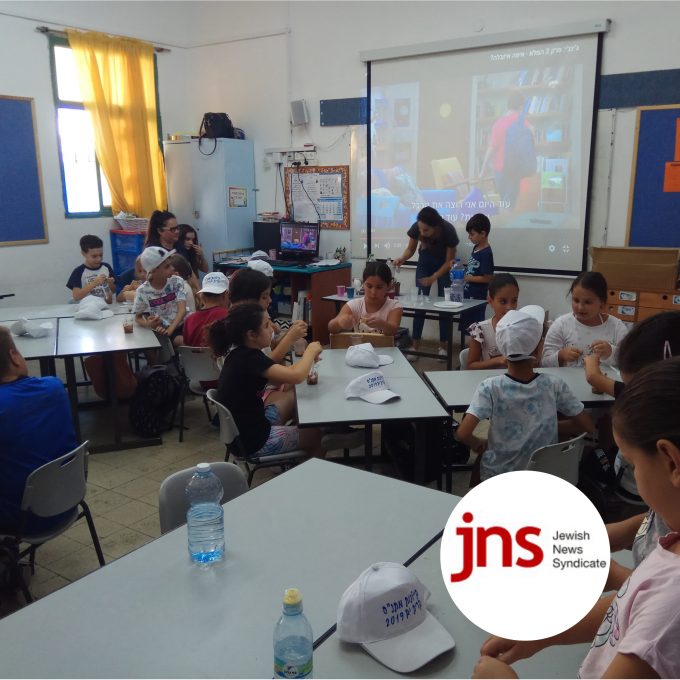May 04, 2007 World ORT videoconferencing initiative brings schools in Ukraine and Israel together for chemistry quiz An ORT school in Ukraine has used advanced videoconferencing technology to stage a chemistry quiz between a team of its students and a team of Israeli high school students. The six-member team at the Kiev ORT Technology Lyceum held a rival team at the ORT Afek school in Kiryat Bialik to a draw both teams answering all questions correctly. The format of the quiz was based on a popular Russian-language television show, Who Where Why With dozens of school friends supporting them, each team had to answer tough, randomly selected chemistry questions that had been prepared in a collaborative effort by their respective teachers. Both teams could see each other and had to answer the questions live, in real time, said the Director of the World ORT Representative Office in Ukraine and Moldova, Slava Leshchiner, They could do so thanks to our use of Polycom hardware and software and the use of IP channels. The quiz was the result of months of preparatory work, Dr Leshchiner said. The event showed not only the potential of videoconferencing in opening up classrooms to the world but also proved to be a wonderful incentive for the children to hone their chemistry knowledge. It also set an important example to the audience, who could see their friends on the school team display a positive attitude to study, he said. The Kiev ORT Technology Lyceum team confer. The teams had to answer questions ranging from the straightforward, such as the derivation of the word gas (from the Greek word chaos), to the obscure: which element has two neighbours in the Periodic Table, one named after someone famous for his prizes, the other responsible for the Periodic Table itself Kiev ORT Technology Lyceum Principal Yuri Kinkov presented his team members with a chemistry book each. And the Deputy Head of the Dneprovsky District of the Kiev Administration, Valentina Klomova, said that the ORT Technology Lyceum would be the first school to benefit from new fibre optic Internet cables being laid in the area. You are an example for all schools in Kiev of how to use network technologies in education, Mrs Klimova said. World ORT Director General Robert Singer said the quiz showed the benefits to be gained through international cooperation. So much can be achieved through friendship and mutual support, he said. ORTs worldwide movement is the perfect vehicle for joint Israel-Diaspora student projects. After an enforced absence, World ORT returned to the Former Soviet Union in 1991. It now coordinates operations in Russia, Ukraine, Moldova, Belarus, Latvia, Lithuania and Kyrgyzstan 53 projects in 32 locations serving more than 30,000 people. The school in Kiev is part of World ORTs Regeneration 2004 programme, through which ORT is reaching out to more Jewish communities in the CIS and Baltic States. Backed by long-standing ORT supporters Ron Baron and Milton Gralla, this follow-on programme to the highly successful Regeneration 2000 will see the teaching of technology and other subjects raised to international levels to ensure that the schools are attractive to Jewish students and so provide an important platform for the future of their communities. Last year, Kiev ORT Technology Lyceum became the first secondary school in Ukraine to join the Cisco Networking Academy Programme, which provides skills needed to work in IT fields. Students are able to study, in English, the Cisco IT Essential course in Basics of Informatics Technology. World ORT is the worlds largest Jewish education and vocational training non-government organisation and has benefited more than 3 million people Jewish and non-Jewish in 100 countries since its foundation in 1880. (The answer to the quiz question cited above is Lawrencium, number 103 in the Periodic Table. Its neighbouring elements are Nobelium (102), named after Alfred Nobel, and Mendelevium (101), named after the chemist Dmitry Mendeleyev.)

Videoconferencing initiative connects schools in Israel and Ukraine
04.05.07




